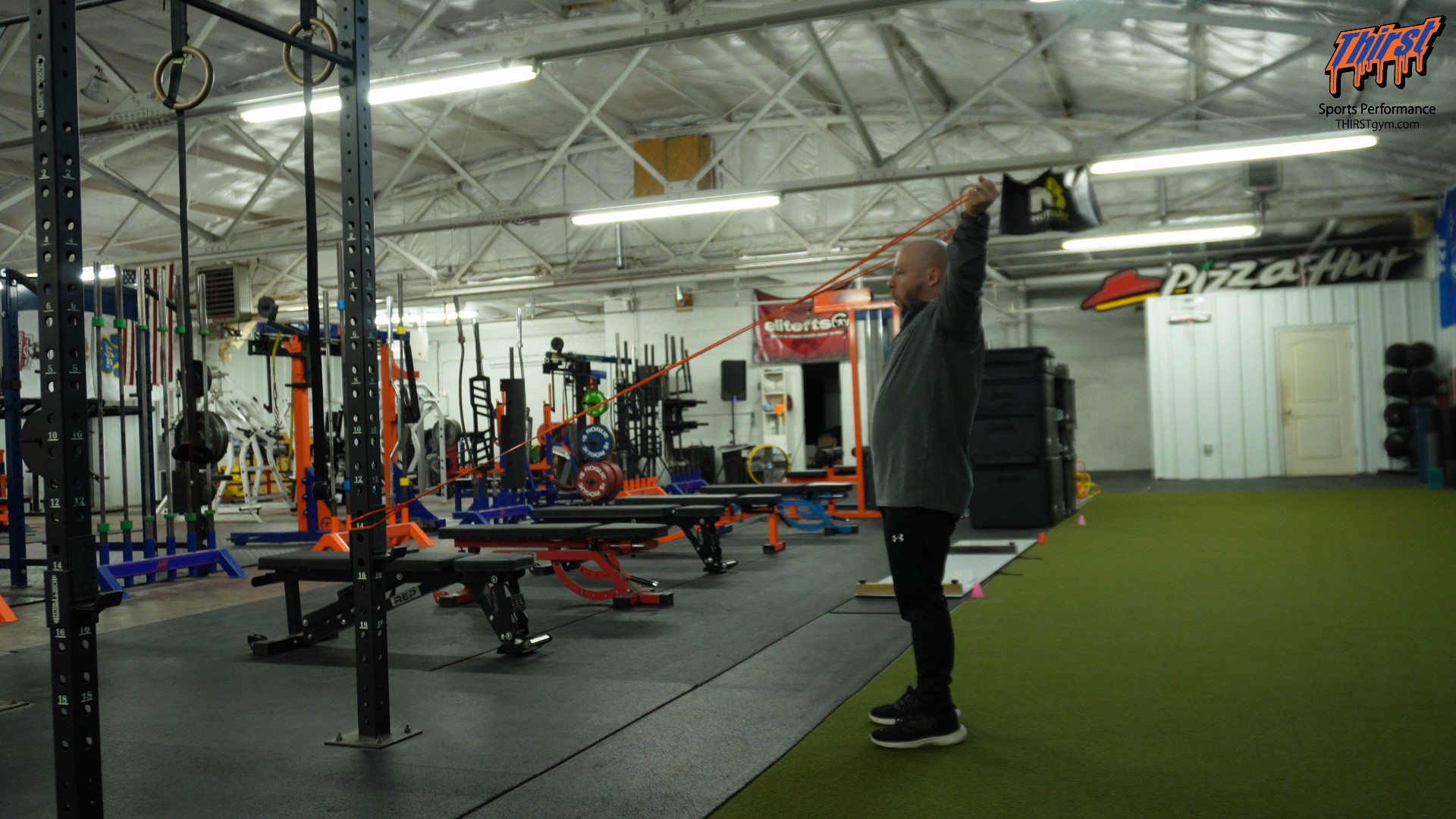The Ultimate Guide to the Band I, Y, T, W Complex: Shoulder Stability for Athletes
Are you looking for an effective exercise to improve shoulder stability, prevent injuries, and enhance your athletic performance? The Band I, Y, T, W Complex might be exactly what you need. This comprehensive shoulder prehab routine targets multiple shoulder positions to build strength and stability throughout the rotator cuff and posterior shoulder muscles.
Watch the video below on how to maximize this exercise.
What is the Band I, Y, T, W Complex?
The Band I, Y, T, W Complex is a series of resistance band exercises that move your arms through four distinct positions, forming the letters I, Y, T, and W. This exercise sequence comprehensively trains the rotator cuff muscles, posterior deltoids, rhomboids, and other stabilizing muscles around the shoulder blades.
As the name suggests, this isn’t just a single movement but a “complex” – a sequence of related exercises performed back-to-back to create a complete training effect. What makes this exercise particularly valuable is how it strengthens shoulders through multiple planes of motion, improving functional stability for athletic movements.
Benefits of the Band I, Y, T, W Complex
- Improved shoulder stability – Creates strength through multiple ranges of motion
- Enhanced rotator cuff strength – Targets these critical but often neglected muscles
- Injury prevention – Particularly beneficial for overhead athletes (swimmers, baseball/softball players, etc.)
- Balanced shoulder development – Counteracts the forward shoulder posture common in modern life
- Performance enhancement – Builds the foundation for stronger pressing and pulling movements
Equipment Needed
The setup for this exercise is refreshingly simple:
- Two resistance bands (light to medium resistance)
- An anchor point (power rack, door frame, sturdy post, etc.)
How to Perform the Band I, Y, T, W Complex
Setup
- Anchor one band securely to a rack or fixed object at approximately hip height
- Loop the second band through the first to create handles
- Step back to create tension in the bands
- Stand tall with feet firmly planted and core engaged
The I Position
- Start with arms extended down at your sides
- Raise both arms straight overhead with thumbs up (like forming the letter “I”)
- Maintain a slight bend in the elbows
- Feel your shoulder blades move upward (elevation)
- Hold briefly at the top
- Return to starting position
The Y Position
- Raise your arms at a 45-degree angle from your body (forming a “Y” shape)
- Keep thumbs pointing up
- Focus on squeezing your shoulder blades together and slightly upward
- Hold briefly at the end range
- Return to starting position
The T Position
- Raise your arms straight out to the sides at shoulder height
- Keep thumbs pointing up and palms forward
- Squeeze your shoulder blades together (retraction)
- Hold briefly at the end range
- Return to starting position
The W Position
- Bend your elbows at 90 degrees with upper arms at shoulder height
- Pull the bands back while rotating your hands so palms face forward
- Think of this as a “face pull” movement followed by external rotation
- Your arms should form a “W” shape
- Hold briefly in this position
- Return to starting position
Programming Recommendations
For optimal results:
- Sets and Reps: 2-4 sets of 3-5 repetitions of each letter (12-20 total reps per set)
- Tempo: Control the movement in both directions, focusing on quality over quantity
- Resistance: Choose bands that allow complete range of motion with moderate challenge
- Frequency: 2-3 times per week, either as part of your warm-up or as a standalone prehab session
When to Include the I, Y, T, W Complex in Your Training
This versatile exercise can be incorporated into your training routine in several ways:
- Pre-workout activation: Perform before pressing movements (bench press, overhead press), pulling exercises (pull-ups, rows), or throwing activities
- Post-workout: Use at the end of your training session to reinforce proper shoulder mechanics
- Off-day recovery: Include on rest days to maintain shoulder health without taxing recovery
- Injury rehabilitation: Often prescribed by physical therapists for shoulder rehab (consult your healthcare provider)
Common Mistakes to Avoid
- Excessive arching: Keep your ribs down and core engaged to prevent compensating with back extension
- Shrugging: Focus on shoulder blade movement rather than elevating your shoulders toward your ears
- Using too much resistance: Choose bands that allow proper form throughout the entire range of motion
- Rushing through reps: Move deliberately and focus on feeling the targeted muscles working
Why the Band I, Y, T, W Complex Works
The genius of this exercise lies in its comprehensive approach to shoulder training. By moving through multiple angles and positions, you develop strength and stability through the entire range of shoulder motion. This translates directly to improved performance in sports and reduced injury risk.
For overhead athletes like swimmers, baseball pitchers, or volleyball players, this exercise is particularly valuable as it directly strengthens the muscles needed for their sport-specific movements while building resilience against the repetitive stresses these sports place on the shoulder joint.
Conclusion
The Band I, Y, T, W Complex deserves a place in virtually every athlete’s training program. Whether you’re looking to prevent injuries, rehabilitate from shoulder issues, or simply build a stronger foundation for your training, this exercise delivers tremendous value with minimal equipment needs.
By incorporating this shoulder stability routine into your regular training schedule, you’ll develop stronger, more resilient shoulders capable of performing at their best. Your future self will thank you for the investment in shoulder health!








